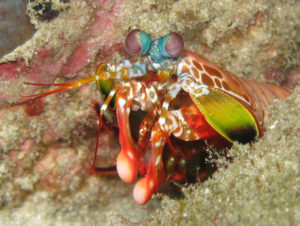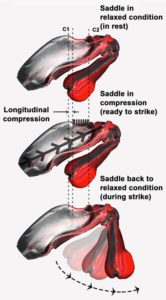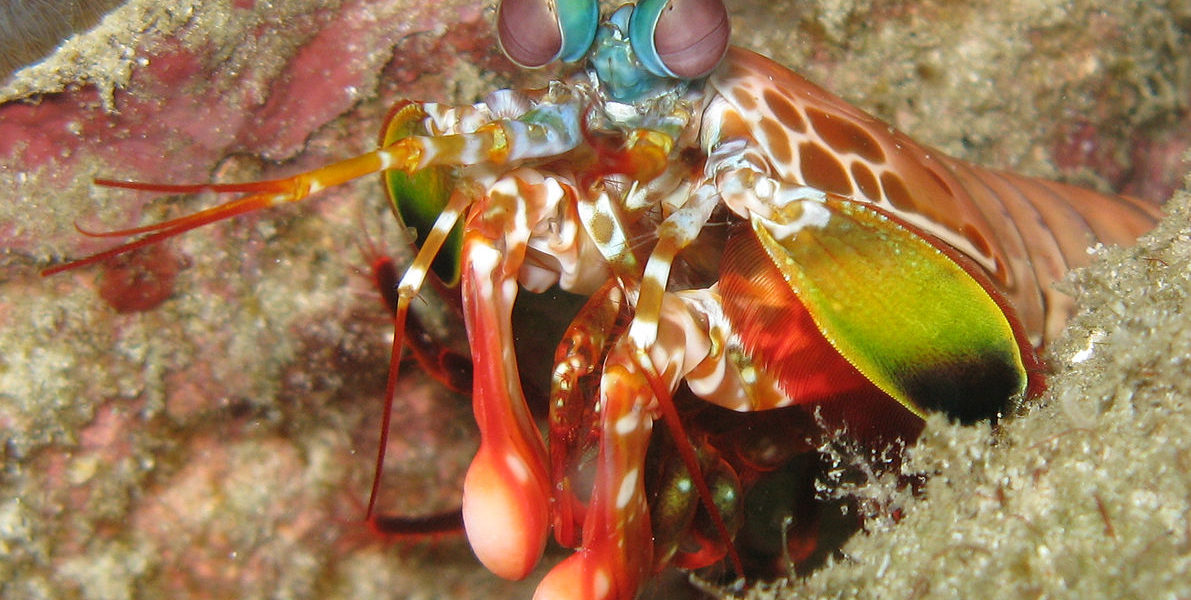The mantis shrimp, a six inch long crustacean residing in the warm waters of the Pacific and Indian oceans, may look harmless with its rainbow shell, but it is able punch its prey with the same acceleration as a 0.22 caliber bullet, providing around 1500 newtons of force with each blow. The mantis shrimp can shatter the glass of aquariums, catch and kill their prey with minimal effort, and punches so fast that cavitation bubbles form behind their hammer-like clubs. Cavitation bubbles are pockets of low pressure air that form when a liquid is moved faster than it can react, and collapse with tremendous heat and force—enough to crack the shells of other crustaceans or even a glass bottle.

The mantis shrimp gets the power for its punches from elastic energy storage—that is, it stores energy in its muscles as they are compressed when cocking its dactyl club back into the locked position. A four bar mechanism within the club and body of the shrimp is used to hold the club back in place until it is ready to punch and a latch is released, transferring the stored energy into rapid motion of the club.

The material composition of the mantis shrimp’s shell enables it to hit so hard without damaging itself. The two layers of the shell on the club allow it to withstand large stresses in both tension and compression, which is uncommon of most shells since they are ceramic materials, which are very brittle. Both layers are made out of hydroxyapatite (HA), a highly crystalline and hard calcium phosphate that is found in human bone, and chitin, a hard biopolymer fiber found in outer shells of most crustaceans and insects. Differing structures and amounts of each material provide different functions in the layers of shell. The outer layer is arranged in a wave-like pattern of HA and chitin that effectively redistributes stresses evenly over the whole surface, greatly decreasing the chance of cracking. The inner layer is less stiff than the outer layer, and is composed of HA and chitin in helical patterns, which allows for small cracks to form in a spiral shape instead of cracking straight through the shell. This greatly increases the lifetime of the club’s shell.
Ceramics are typically not used in robotics due to their brittle nature, but, if modeled after the shell of the mantis shrimp, this could be overcome and provide a stiffer and lighter material to be used in the robotics industry. Additionally, the material composition of their clubs could be used to develop resilient protective body armor for the military and police forces, or helmets for bike riders or football players.
Additional information on the mantis shrimp can be found at Wired.com and theoatmeal.com, and in the following video.
Featured image from Wikimedia Commons
